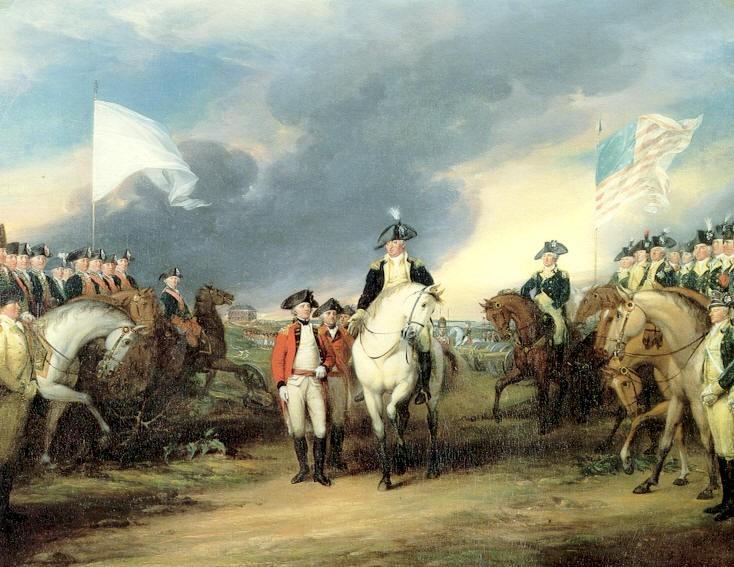
From the Office of Education study guide:
Let us hope that the fierce passion with which we have defended our rights since we first began to accumulate them, a bit at a time, from those who would have kept us in physical, political, or economic subjection, will never abate as long as life remains.—HAROLD L. Ickes.
The end of the Revolutionary War in 1783 saw the birth of a nation— The United States of America. Six years later, the Constitution was adopted. The rights, for which our forefathers had fought and died, were thus preserved for us and for our children. But, it still remained to knit together the thirteen states into one strong nation.
Early Struggles.
Two parties had already arisen. The Federalists stood for a strong central government. The Anti-Federalists stood for state rights. The Federalists were ably guided by Alexander Hamilton and other leaders. They organized the national forces, made peace abroad, promoted trade at home, and placed our finances on a sound basis. Attacks on the policies of the Government became so great during the presidency of John Adams, 1797-1801, that the Sedition Act was passed. This made it a crime for anyone to attack government officials in the newspapers. This attempt to weaken the freedom of the press was chiefly responsible for the fall of the Federalists and for the rise of Jefferson's party. The
Opening of the West.
In 1803, the Louisiana Territory was purchased from Napoleon for $15,000,000—less than three cents an acre. This purchase doubled the size of the United States and made us supreme in the Mississippi Valley. Our boundary was now extended westward to the Rocky Mountains and northward to the Canadian border. The United States was on the threshold of one of the most colorful and heroic periods of its history. Long before this, the challenge and the lure of the frontier had brought pioneers into the wilderness. However, there were few good roads and the Indians were hostile. The hardships of frontier life were such that the number of settlers west of the Alleghanies before the Revolution was small. During the Jefferson period, poor business conditions in the East and cheap western land started a great flow of people into Pennsylvania, Ohio, Kentucky, Tennessee, and Indiana. The glowing reports brought back by Lewis and Clark after their historic journey to the Northwest did much to start this movement.Roads, Rivers, and Canals. Up until this time, the rivers—particularly the Ohio and Mississippi—had been the great highways of travel. Now, in answer to popular demand, money was used for building roads and canals. Greatest of the roads, and the first federal effort of its kind, was the Cumberland Road which ran from Cumberland, Maryland, to Wheeling, West Virginia. Greatest of the canals was the Erie Canal linking the Great Lakes with the Hudson River. Then came the steamboat to speed up traffic along the Hudson, Ohio, and Mississippi.
Social Progress.
Towns sprang up along the rivers and the frontier was pushed westward rapidly. Axe and gun preceded the log cabin, plows broke the land, and, as the settlements thickened, churches and schools were built. Scorning the traditions of the older East, these pioneer people had no class distinctions. The worth of an individual was measured not so much by his origin as by his ability to achieve with axe and plow. In spite of opposition, westerners entered Congress and took an active part in the affairs of the nation. More and more newspapers were published. Academies, public schools. and colleges were founded. Music and drama were brought from the East. News of the great continent being opened up traveled quickly to all parts of the world. As a result, the United States for a long time became the promised land for many oppressed and downtrodden peoples of other countries.
WNYC archives id: 125535
